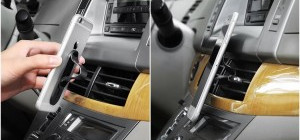 If you read most articles about TV screen protectors, then you will get a general list of benefits and things to look for when buying a protector. If you’re like me, then this general information just isn’t enough. You want much more, such as knowing how thick the plastic (i.e. Pexiglas or Lexan) should be or how to get a protector for an uncommonly sized TV. If you have to read one article about TV screen protectors, then make sure that you read this one.
If you read most articles about TV screen protectors, then you will get a general list of benefits and things to look for when buying a protector. If you’re like me, then this general information just isn’t enough. You want much more, such as knowing how thick the plastic (i.e. Pexiglas or Lexan) should be or how to get a protector for an uncommonly sized TV. If you have to read one article about TV screen protectors, then make sure that you read this one.
Don’t Be Like This Dude
[youtube http://www.youtube.com/watch?v=IJG0A3XVqWQ]
Real Benefits
There are four major benefits (aside from saving money) that you can expect to gain from a TV screen protector. The most obvious benefit is that the plastic will add impact resistance to your TV. A common TV has very brittle glass that will break from even the slightest impact. Consider it a miracle if a toy or controller bounces off the screen without breaking it.
While it will largely depend on the exact protector that you get, most protectors can resist a six-ounce object flying at 20mph, which should be more than enough protection. To put this simply: the TV would only experience this impact if someone intentionally throws a large rock at it.
The next benefit is that it keeps the screen from getting dusty. This might seem small, but dust often causes small scratches in the glass when it’s moved around. Usually these scratches don’t interfere with your entertainment, but they can sometimes get so bad that one or more sections of the screen will improperly reflect light, which is distracting.
Not only do protectors resist scratches and attract less dust, but you can easily change the protector even if it does get scratched.
A less obvious benefit is glare protection. TVs are prone to glaring if any light directly hits the screen. While most people just move the TV, this is sometimes impossible or very inconvenient. A TV screen protector diffuses the light so that there won’t be a glare. Even economic protectors will largely reduce the glare.
The least obvious benefit that most people don’t consider is UV radiation protection. TVs, and all other home appliances and devices, emit a significant amount of UV radiation. While it’s true that this is largely regulated and that the radiation shouldn’t be enough to harm you, too much exposure can lead to cancer and other problems.
You can avoid 95%+ of the radiation by using a protector. The best ones even block 99.9%.
Will the Protector Disrupt the Image?
One of the most common worries about getting a protector is whether it will disrupt the image and make it look dull, dim or warped. Let me quell your fears: your games and shows should look nearly or exactly the same. While some budget protectors might dim the image slightly, the vast majority of protectors will not diminish the quality of your TV.
The same goes for 3D TVs. Yes, you can still watch passive and active 3D broadcasts without any loss of quality. Everything will look exactly the same after the protector is installed.
Installation Process
While there are several different ways to install a TV screen protector, all of them are very easy. The most common installation method is using straps that go around your TV. Just slide the straps around both sides of the TV, tighten them and the protector is installed.
Some use hooks. Just screw the hooks onto the protector and slide it on the TV.
Common Weight
Most TV screen protectors are very light and you should have no problem adding it to your flat screen TV. For instance, a 32″ protector is going to weigh around five pounds. Unless you have a very flimsy TV, these protectors shouldn’t cause any damage whatsoever. The weight is also evenly distributed so that there won’t be any problems.
Uncommon Sizes
While you can easily find screen protectors for commonly sized (and common ratios) TVs, there might be times when you have an uncommon size or aspect ratio. Just make sure that the company that you choose to buy from offers free customization for their products.
Best Thickness
Everyone seems to have their own preference, but there’s a common thickness that you should strive for. Any thinner and the protector wouldn’t be able to block incoming objects. Any thicker and it would disrupt the image and potentially block signals from the remote controller.
The most common size for a Plexiglas protector is 1/4″ thick. Because Lexan is stronger, Lexan protectors are only 1/8″ thick.
Conclusion
Finding and buying a great TV screen protector isn’t that difficult, but you probably have some questions and want to know what to really look for. Ensure that the protector has finished edges, can block a lot of UV radiation, is about 1/8-1/4″ thick and that it’s made to fit your TV.
That’s all you really need to do. Now go out and get one so that you can protect your TV.







